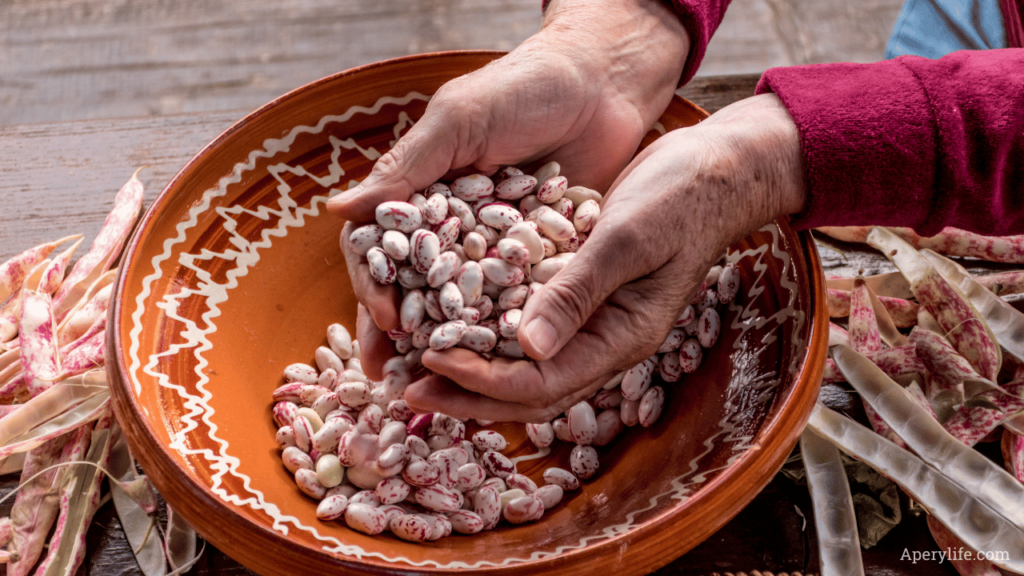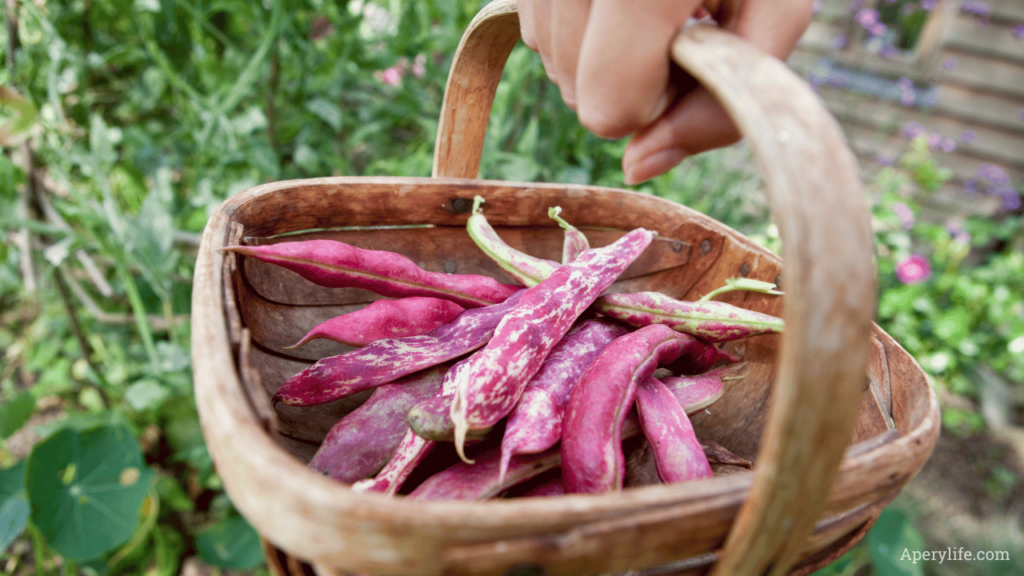From Field to Kitchen: A Journey into the World of Borlotti Beans Borlotti beans, with their rich flavor and versatility in the kitchen, are among the most appreciated and widely used legumes. But what do we really know about these delicious and nutritious beans?
A Dive into History and Traditions The history of borlotti beans has deep roots in antiquity. Originally from the Americas, they were introduced to Europe after the discovery of the New World. In Italy, borlotti beans have become a fundamental ingredient in traditional cuisine, especially in northern regions like Piedmont and Lombardy, where they are used in numerous traditional recipes.
Description: Borlotti beans, known for their mottled red and white skin, are among the most common and beloved legumes. Discover everything about borlotti beans: when to buy them, how to grow them, and how to use them in the kitchen.
Seasonality: Fresh borlotti beans are available from July to September, while dried ones can be found year-round. The best time to enjoy them fresh is during the summer.
General Properties: Borlotti beans are not only delicious but also rich in nutrients. They are an excellent source of protein, fiber, vitamins (B, C), minerals (iron, potassium, magnesium), and antioxidants. These valuable elements contribute to:
- Supporting the immune system
- Promoting heart health
- Regulating blood sugar levels
- Aiding digestion
- Providing energy
Growing Tips for Borlotti Beans

Growing borlotti beans can be done at home with a bit of patience and the right conditions. Here’s how to proceed: If you are fortunate enough to have a garden or an orchard, try the satisfaction of growing your own borlotti beans. It is a rewarding experience that will allow you to enjoy a genuine, zero-kilometer product.
Soil Preparation: Borlotti beans prefer well-drained soil rich in nutrients. Preparing the soil with compost or well-rotted manure can help improve soil quality.
Sowing and Growth:
- Sowing: Borlotti beans should be sown directly in the soil in spring, after the risk of frost has passed. Plant the seeds at a depth of about 2-3 cm, maintaining a distance of 10-15 cm between plants.
- Growth: Keep the soil moist but not waterlogged. Borlotti beans need plenty of sunlight to grow strong and healthy. If necessary, provide support for climbing plants.
Harvesting:
- Fresh Bean Harvest: Borlotti bean pods are ready to be harvested when they become full and firm, usually about 60-70 days after sowing.
- Dried Bean Harvest: For dried beans, allow the pods to mature fully on the plant until they become dry and brittle. Harvest the pods and let the beans dry completely before storing.
Importance of Buying Local Borlotti Beans

Buying local borlotti beans not only supports farmers in your area but also ensures that you are getting the freshest product possible. Freshly harvested beans have a more intense flavor and better quality than those that have traveled long distances. Additionally, buying local beans helps reduce the environmental impact of transportation and promotes sustainable farming practices.
History of Borlotti Beans: Borlotti beans were introduced to Europe after the discovery of the Americas and have become a staple in many traditional Italian dishes. Today, Italy is renowned for the quality of its borlotti beans, especially in the northern regions.
Choosing and Storing Borlotti Beans To best enjoy the flavor of borlotti beans, it is important to choose them fresh. Here are some tips:
- Appearance: Choose beans with firm, plump pods without spots.
- Touch: The beans should be firm to the touch and free of excess moisture.
- Smell: Fresh beans have a delicate and characteristic aroma.
- Seasonality: Fresh borlotti beans are available from July to September, while dried ones can be found year-round.
Once purchased, fresh borlotti beans should be stored in the refrigerator and consumed within a few days. Dried beans, on the other hand, should be stored in a cool, dry place and can last for several months.
A Versatile Ingredient in the Kitchen Borlotti beans are a versatile ingredient in the kitchen and can be used in various preparations:
- First courses: Soups, minestrone, pasta and beans.
- Main courses: Beans all’uccelletto, stews.
- Side dishes: Bean salads, beans with vegetables.
- Preserves: Canned beans, bean pâté.
Recipes for All Tastes To stimulate your imagination, here are some borlotti bean-based recipes:
- Pasta e Fagioli: A timeless classic, perfect for a nutritious lunch.
- Fagioli all’Uccelletto: A rich and tasty main course, ideal for a traditional dinner.
- Borlotti Bean and Tuna Salad: A fresh and light dish, perfect for a quick lunch break.
Sustainability: A Gesture for Taste and the Environment
An Invitation to Enjoy the Earth Borlotti beans are a gift of the earth, a legume that encapsulates flavor, tradition, and wellness. Enjoy them in all their variations, experiment with new recipes, and share the joy of this fruit of the earth with your loved ones.
Choosing local borlotti beans means:
- Superior taste: Fresh beans, with a more intense and aromatic flavor.
- Guaranteed quality: Local production with sustainable agricultural practices.
- Less environmental impact: Reduced CO2 emissions and pollution.
- Support for the local economy: Enhancement of the territory and local labor.
How to recognize local borlotti beans:
- Market stalls: Prefer stalls that display local products.
- Informative labels: Pay attention to labels; it’s always good to read the product information before purchasing.
And you? What are your favorite recipes?
Reproduction reserved © Copyright Aperylife.com